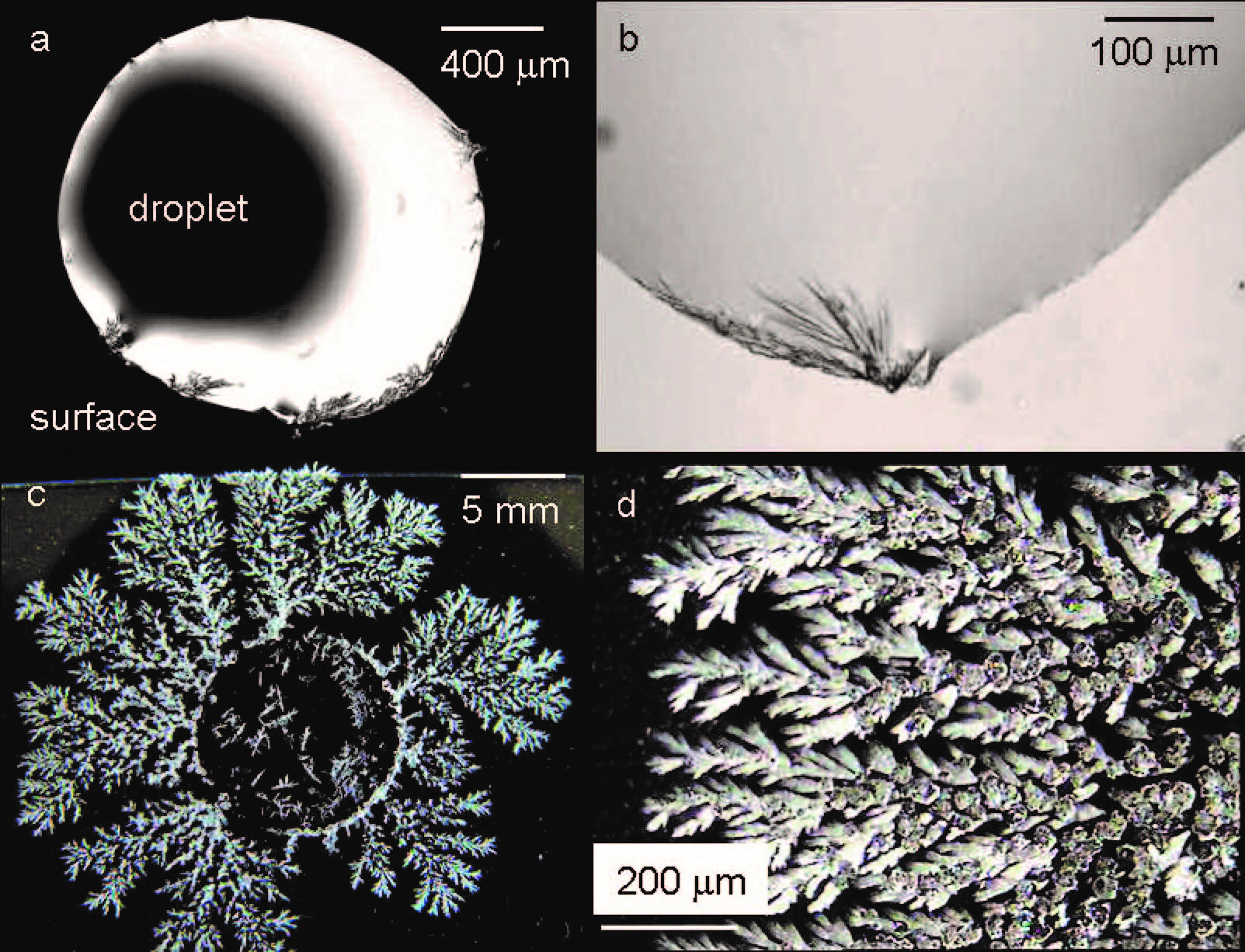Desired candidate : Master’s or bachelor student.
Salt deposition leads to a variety of pattern formation in natural landscapes such as salt trees or structures on limestone stalactites. Salt crystallization in porous rocks have been recorded to induce mechanical stresses in excess of 200MPa, leading to irreversible damage and fracture. While we know that ions increase the surface tension of liquids, their influence on the wetting properties are little studied. We will study theoretically and experimentally the coupled dynamics of evaporative wetting, where a drop may spread and deposit its own (soluble) substrate on different time scales. This leads to instabilities and the formation of patterns, due to enhanced evaporation in highly curved interfaces.
Classical wetting experiments (equilibrium drop diameter on a given substrate, Jurin’s tube, capillary meniscus,..) will be revisited in this new bicomponent system.

Figure 1- Dendrites form during the evaporation of aqueous droplets loaded with sodium sulfate. Reproduced from Noushine Shahidzadeh-Bonn, et al. “Salt crystallization during evaporation: impact of interfacial properties.” Langmuir 24.16 (2008): 8599-8605.
Supervisor: Hervé Elettro